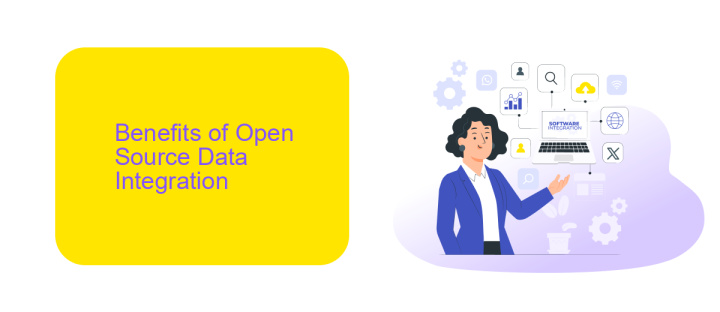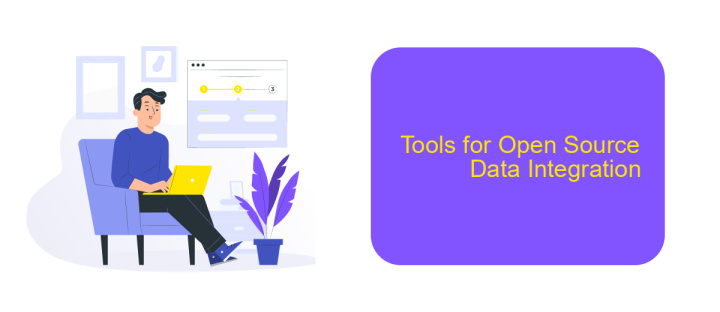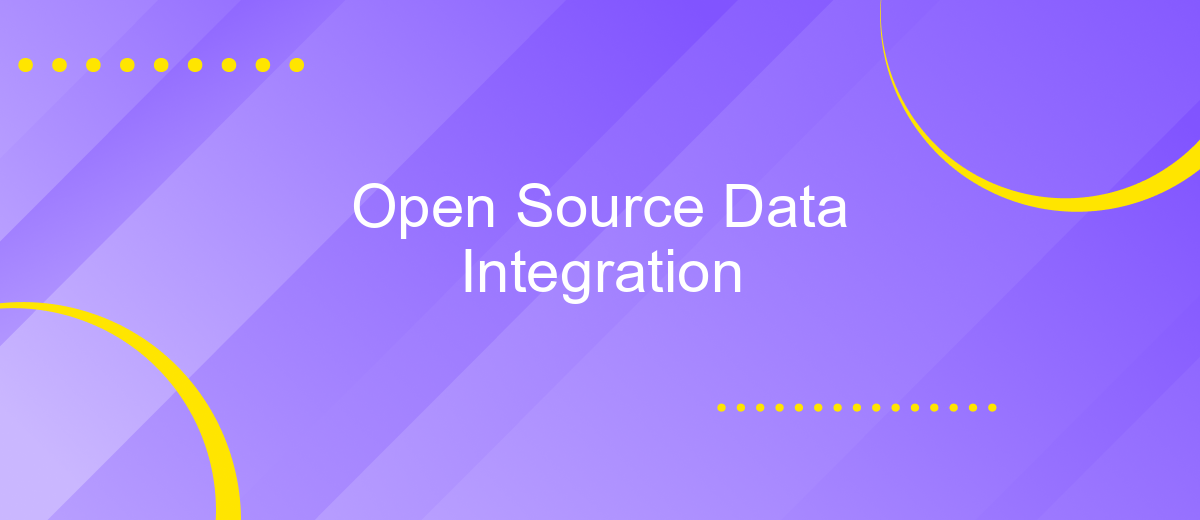Open Source Data Integration
Open source data integration has become a cornerstone for modern enterprises seeking to leverage diverse data sources without the constraints of proprietary software. By utilizing community-driven tools and platforms, organizations can efficiently combine, process, and analyze data, fostering innovation and agility. This article explores the benefits, challenges, and best practices of adopting open source solutions for seamless data integration.
Introduction
Open Source Data Integration is a vital component in the modern data-driven landscape. It enables organizations to seamlessly connect disparate data sources, ensuring a unified and comprehensive view of their data. By leveraging open-source tools, businesses can achieve cost-effective and flexible integration solutions tailored to their specific needs.
- Cost-effective solutions without licensing fees
- Flexibility to customize and extend functionality
- Community support and regular updates
- Interoperability with various data sources and platforms
One such tool that simplifies data integration is ApiX-Drive. This service allows users to automate workflows by connecting different applications and transferring data between them effortlessly. With its user-friendly interface and extensive range of supported apps, ApiX-Drive makes it easier for organizations to manage their data integration processes without requiring extensive technical expertise.
Benefits of Open Source Data Integration

Open source data integration offers numerous benefits, making it an attractive choice for organizations of all sizes. Firstly, it provides cost efficiency as there are no licensing fees associated with open source software. This allows companies to allocate their budget to other critical areas while still benefiting from robust data integration solutions. Additionally, open source tools are highly customizable, enabling organizations to tailor the software to meet their specific needs and requirements. This flexibility ensures that companies can adapt quickly to changing business environments and data integration challenges.
Another significant advantage is the vibrant community support that comes with open source projects. Users can access a wealth of knowledge, including forums, documentation, and tutorials, which can help troubleshoot issues and optimize integration processes. Services like ApiX-Drive further enhance the open source experience by providing user-friendly platforms to set up and manage integrations effortlessly. ApiX-Drive simplifies the process of connecting various applications and automating workflows, reducing the time and effort required for data integration tasks. Overall, open source data integration fosters innovation, collaboration, and efficiency, driving better business outcomes.
Challenges of Open Source Data Integration

Open source data integration presents several challenges that organizations must navigate to ensure seamless and efficient data operations. One major challenge is the compatibility of different data sources and formats, which can complicate the integration process. Additionally, open source tools often require a high level of technical expertise to configure and maintain, posing a barrier for organizations with limited technical resources.
- Data Compatibility: Integrating diverse data sources and formats can be complex and time-consuming.
- Technical Expertise: Open source tools often need skilled personnel for proper configuration and maintenance.
- Security Concerns: Ensuring data security and compliance with open source tools can be challenging.
- Scalability Issues: Some open source solutions may struggle to scale with growing data volumes.
- Support and Documentation: Limited official support and documentation can hinder troubleshooting and optimization.
To mitigate these challenges, organizations can leverage services like ApiX-Drive, which simplifies the integration process by offering user-friendly interfaces and robust support. ApiX-Drive helps bridge the gap between various data sources, making it easier to manage and synchronize data without requiring extensive technical expertise. This allows organizations to focus more on deriving value from their data rather than being bogged down by integration complexities.
Tools for Open Source Data Integration

Open source data integration tools have become essential for organizations looking to streamline their data processes without incurring high costs. These tools offer flexibility, community support, and the ability to customize solutions to fit specific needs.
One of the primary advantages of open source tools is their ability to integrate with various data sources and platforms. They allow organizations to automate workflows, thereby saving time and reducing the risk of human error. Moreover, the open source community continuously updates these tools, ensuring they remain relevant and secure.
- Apache Nifi: A powerful tool for automating data flow between systems.
- Talend Open Studio: Provides a robust platform for data integration and transformation.
- ApiX-Drive: Facilitates seamless integration between different applications and services.
- Airbyte: An open-source data integration engine that helps in syncing data from various sources.
These tools provide a cost-effective and efficient way to manage data integration tasks. For instance, ApiX-Drive simplifies the process of connecting different applications, making it easier for businesses to automate their workflows and focus on core activities. By leveraging these open source solutions, organizations can achieve greater efficiency and data accuracy.
- Automate the work of an online store or landing
- Empower through integration
- Don't spend money on programmers and integrators
- Save time by automating routine tasks
Case Studies
One notable example of successful open source data integration is the case of a mid-sized e-commerce company that needed to consolidate data from various platforms such as Shopify, Google Analytics, and Mailchimp. By leveraging open source tools like Apache NiFi and Talend, the company was able to create seamless data pipelines that integrated these disparate data sources. This not only improved their data accuracy but also provided real-time analytics, enabling better decision-making and customer insights.
Another compelling case study involves a healthcare organization that required robust data integration to streamline patient information from multiple electronic health record (EHR) systems. They utilized ApiX-Drive to automate the integration process, significantly reducing manual data entry and errors. By setting up automated workflows, the organization could ensure that all patient data was up-to-date and easily accessible to healthcare providers, thereby improving patient care and operational efficiency.
FAQ
What is Open Source Data Integration?
What are the benefits of using Open Source Data Integration tools?
How do I choose the right Open Source Data Integration tool?
What are some challenges associated with Open Source Data Integration?
How can I automate and streamline data integration processes?
Apix-Drive is a simple and efficient system connector that will help you automate routine tasks and optimize business processes. You can save time and money, direct these resources to more important purposes. Test ApiX-Drive and make sure that this tool will relieve your employees and after 5 minutes of settings your business will start working faster.


